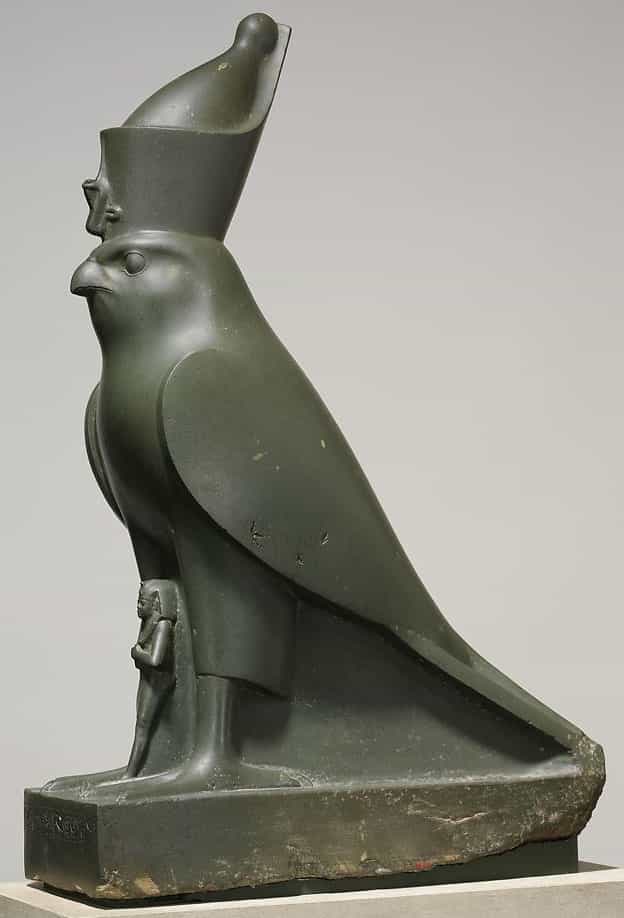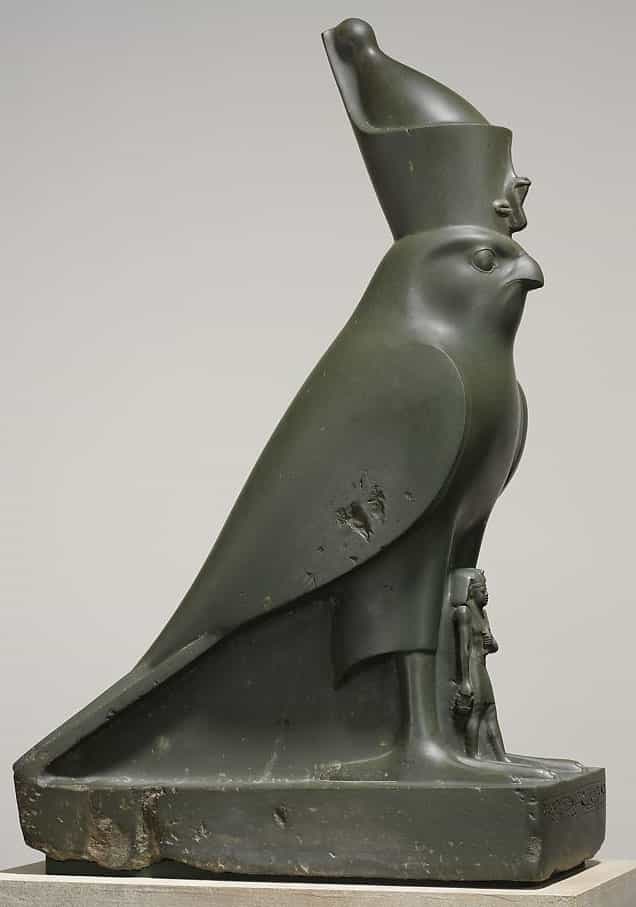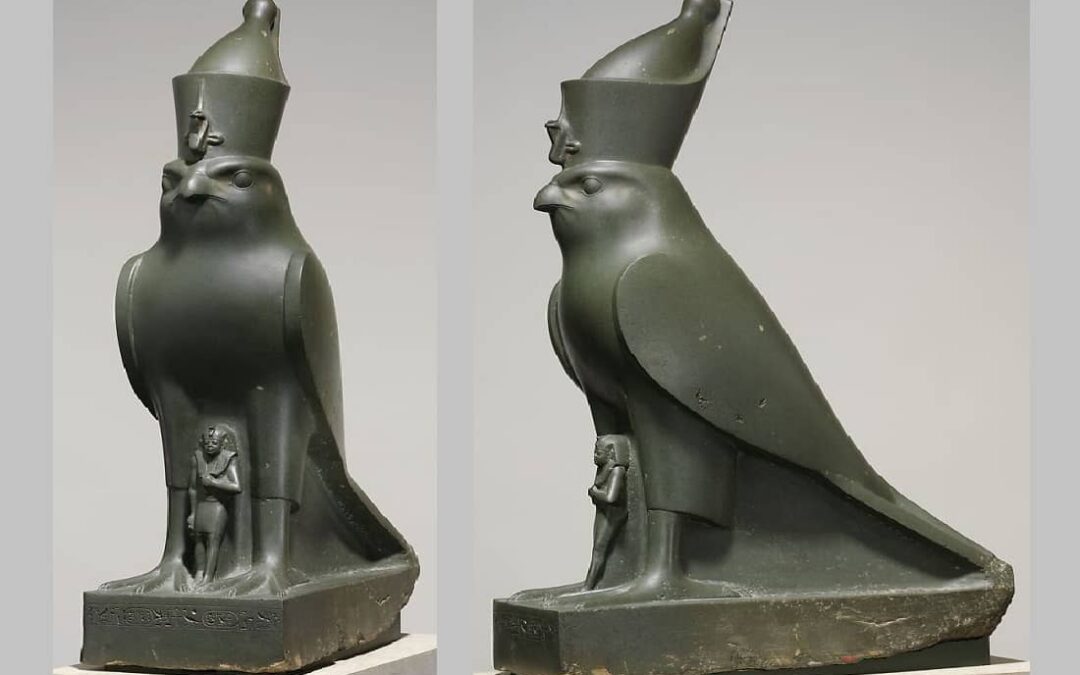The sculpture “Horus Protecting Pharaoh Nectanebo II” is a work of ancient Egyptian art created between approximately 360 BC and 343 BC.
It was made during the reign of Pharaoh Nectanebo II, who was the last ruler of the Thirtieth Dynasty of ancient Egypt.
The year of its discovery is unknown, but it is believed to have been found during archaeological excavations in the ancient city of Heliopolis, located in Lower Egypt, northwest of Cairo.
In 1934 AD, the sculpture was purchased by French diplomat, archaeologist, and historian Eustache de Lorey in Paris, France. It became a part of the art collection of the Metropolitan Museum of Art in New York, United States of America.
Description
The sculpture is made of greywacke, a detrital rock formed by the consolidation of minerals resulting from the disintegration of granite, and was created using incision and carving techniques.
It is a free-standing sculpture that depicts the god Horus, who was the celestial god, initiator of ancient Egyptian civilization, protective god of the pharaohs, god of war, and god of hunting, protecting Pharaoh Nectanebo II.
Horus is represented as a falcon with a double crown, also known as “Sekhemty,” meaning “the two powerful.” The double crown represents both Upper and Lower Egypt, made up of the white crown known as Hedjet and the red crown called Desheret.
Pharaoh Nectanebo II is depicted in a smaller size, standing between the legs of Horus, with his left leg slightly forward and his right leg behind. He wears a skirt and the khat on his head, a headdress fixed with a diadem that has the ureo on his forehead, a protective emblem of the pharaoh.
The pharaoh’s right arm is stretched close to his body, holding an amulet that represents the celebration of the Ancient Egyptian pharaohs known as Heb Sed. His left arm is folded in front of his chest, holding a Khopesh, a sword with a curved blade.
The sculpture rests on a rectangular pedestal made of the same material and with a hieroglyphic inscription engraved on its front edge.
The sculpture is in good condition, with only minor damage visible in the lower rear part, the right wing of Horus, and the base of the pedestal.
According to some researchers, the sculpture represents the emphasis on the connection between Pharaoh Nectanebo II and the god Horus, who was the protector of the dynasty.
The sculpture is currently housed in the Metropolitan Museum of Art in New York, United States of America.











